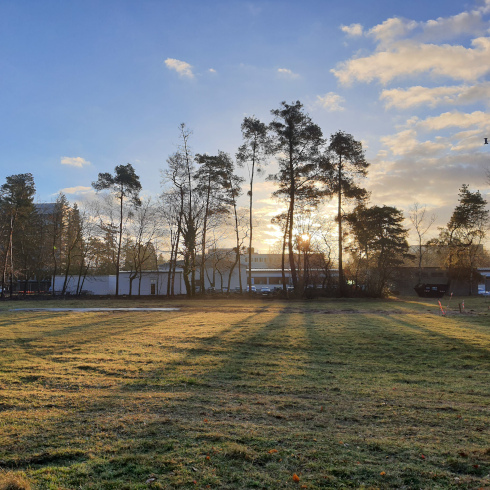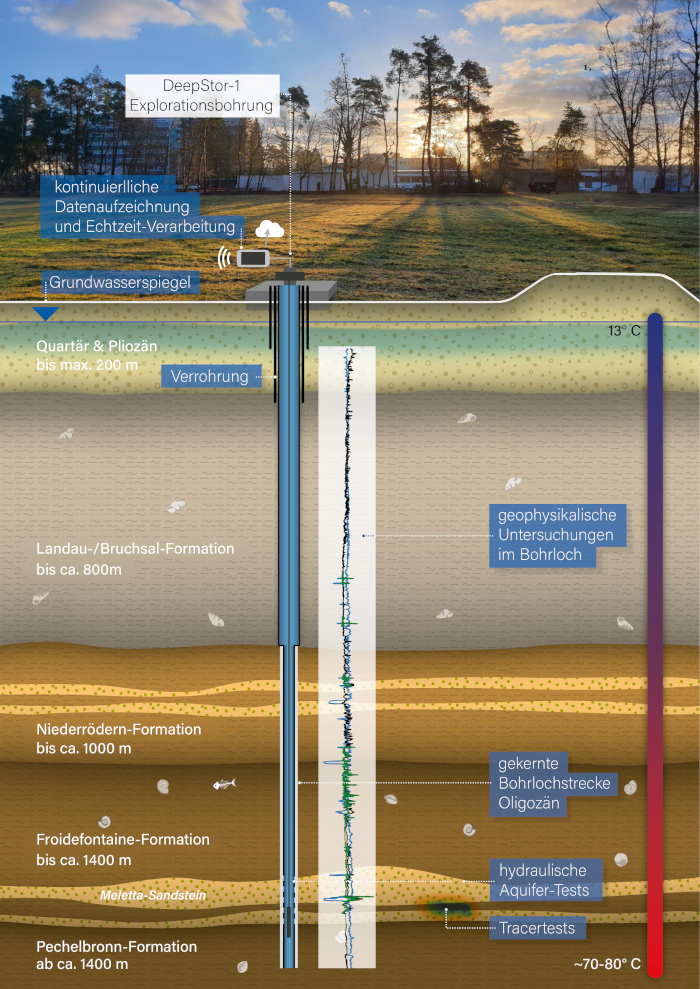The DeepStor project
In the DeepStor research project, scientists are investigating high-temperature heat storage as a geothermal battery deep underground. If it is possible to store excess thermal energy from the summer in the form of hot water in the pores of the deep rock, it could be used as climate-friendly heat in winter. With the envisaged use of a depleted oil field as a heat storage facility, the scientists want to create a genuine geoenergy transition.
>>> Overview of project progess <<<
The DeepStor-1 exploratory borehole into the potential storage locations on the edge of the former Leopoldshafen oil field enables the underground to be explored directly on the Campus North. The researchers want to drill an exploratory borehole approximately 1,400 meters deep in a designated area on KIT Campus North. In one part of the borehole, the rock is to be extracted undisturbed as a drill core and examined in the laboratory. Data from logging and testing will be used to obtain numerous data from the subsurface. This will also make computer simulation models more accurate and meaningful. This will enable the researchers to answer fundamental questions about the suitability of the subsurface for heat storage. DeepStor is seismically monitored intensively, and seismological studies are carried out.
In the Karlsruhe region and in the wider Upper Rhine Graben, there are several former oil layers that could be used to store thermal energy. This results in a large storage potential in the region.
DeepStor is a Helmholtz project and part of the VESTA and GEOZeit research projects. The exploration permit was granted together with EnBW.
![]()
![]()
Contact: Dr. Bastian Rudolph

The installation of the conductor pipes will take place in January 2026, in calendar week 3.
More on this topic
As part of the preparations for the DeepStor exploration well, groundwater monitoring wells are currently being drilled (November/December 2025). They ensure groundwater protection through comprehensive monitoring and management.
More on this topic
The exploration drilling has been approved. Discover more about the DeepStor project – its research objectives, upcoming activities, and the contact to the KIT team advancing innovative technologies for deep geothermal heat storage.
To the PDF documentInvolvement of citizens
GECKO is an inter- and transdisciplinary joint project between the KIT and the Öko-Institut e.V. In a co-design process, a concept for the use of geothermal energy for a climate-neutral heat supply at the KIT North Campus was developed together with citizens and other stakeholders.
heat supply on the north campus of KIT. The results of this project are being incorporated into the DeepStor concept. In the future, citizens will be invited to collect data themselves as part of a citizen science project and thus gain a direct insight into the research.

Do you have any questions about the project? A collection of FAQs on the subject of geothermal energy and geoenergy use for the campus will soon be available on our website.


